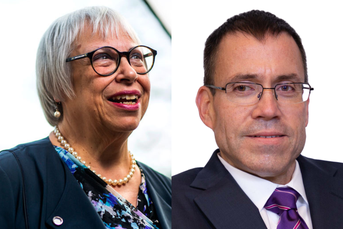How charitable donations can replace the stretch IRA

The stretch strategy, which allowed beneficiaries to spend down inherited traditional IRA assets over the rest of their lives, all but disappeared with the passage in 2019 of the SECURE Act.
Of the various options for filling the void left by the demise of the stretch IRA, charitable remainder trusts are one of the best for some clients, according to panelists at the Pershing Insite conference.
The stretch strategy, which allowed beneficiaries to spend down inherited traditional IRA assets over the rest of their lives, all but disappeared with the passage in 2019 of the SECURE Act. Except for beneficiaries such as surviving spouses and a few other exempt categories, people who inherit IRA assets from someone who died in 2020 or later must completely empty the accounts within 10 years.
Advisers have been using several different strategies to help minimize the tax hit that beneficiaries can get from the new 10-year window. Those include asking clients about doing Roth conversions while they are still alive, or using a see-through trust or a life-insurance policy, said Hans Schemmel, BNY Mellon and Pershing director of retirement, insurance-based and cash management solutions, and Gregory Baker, executive vice president at RenPSG.
Doing nothing and accepting the tax consequences of the new 10-year window is also an option, but it might not work best for many clients, Baker said.
“We’re almost a year and a half after this legislation was passed, and a lot of clients still don’t know these rules,” he said. “For most clients, their IRA is going to be the single highest taxed asset they own. And that high tax ratio means the IRA is also usually the best asset to do special planning with, including gifts to charity.”
Charitable remainder trusts accept the IRA balance and invest the assets in various securities, including mutual funds and ETFs, and make annual cash-flow distributions to beneficiaries, such as an account owner’s children, for the rest of their lives, he noted. After the last remaining beneficiary dies, the remaining assets in the trust go to the charity.
“Most people make some kind of charitable gift every year or two, so it’s not a totally foreign concept to give something to charity at death,” Baker said.
However, the strategy does not let beneficiaries make withdrawals as they please, he noted.
“This is a good solution for clients, but they have to be interested in partnering with charity, because one or more charities will eventually receive a large distribution from that trust,” he said. “We see a charitable remainder trust as not flexible, but for many clients that’s exactly what they want.”
Learn more about reprints and licensing for this article.








